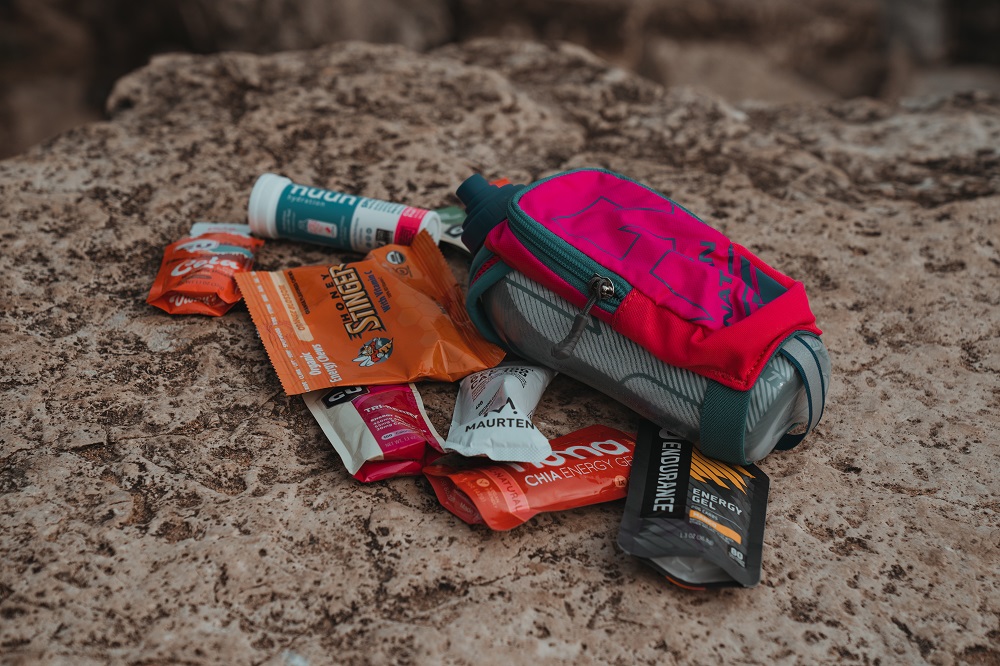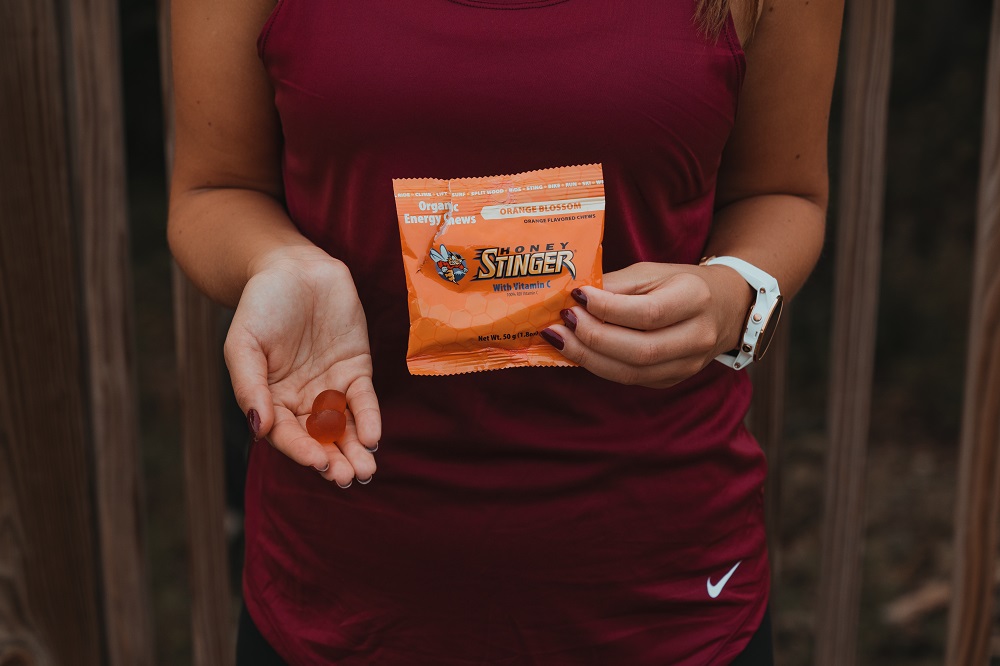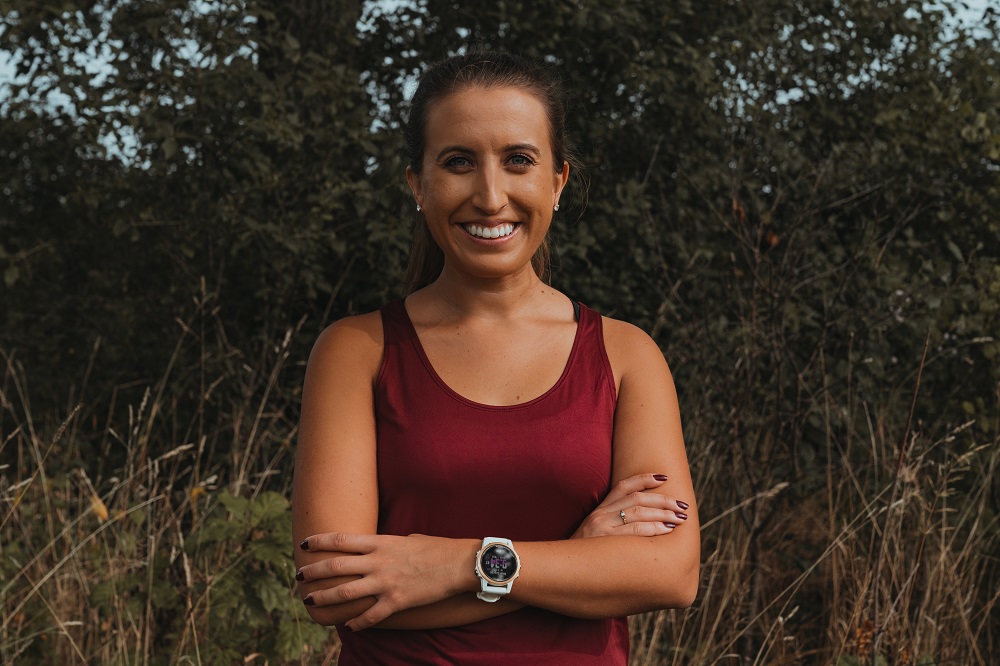Feature: Dr. Alexis Mikrut, DC, MS Answers Running Fuel FAQs and Creates a Baseline Nutrition Plan Using Energy Gels, Drinks, Chews, and Bars


| SHOP NUTRITION |
| SCHEDULE APPOINTMENT AT ALIGNED MODERN HEALTH |
Without on-course aid stations, formulating a nutrition plan during a virtual race can seem like a daunting task. We asked Aligned Modern Health nutritionist Dr. Alexis Mikrut, DC, MS to help us answer common fueling questions and create a baseline nutrition plan using energy gels, drinks, chews, and bars.
Race-day running fuel comes in an assortment of textures and flavors and generally loaded with carbohydrates and glucose (in the form of maltodextrin), and sometimes caffeine, protein, or electrolytes. When your body runs out of its carbohydrate resources, you’ll be forced to slow down.
Read her tips to avoid hitting a "wall" during your longer runs.
At what mileage runs should I start having a nutrition plan?
No mileage is too soon to start developing a nutrition plan. Plans should be tailored to help reach your unique goals, as you build mileage, your plan will also build.
Running fuel comes in a lot of different textures and forms - gels, bars, drinks, chews, and more. Why so many and what’s the difference?
Different forms of easily digestible carbs for specific tolerances and goals. Bars typically have more protein. Gels and chews allow for a higher amount of carbs with less gastrointestinal distress compared to a sports drink. Some sports drinks have added electrolytes and some gels have added caffeine.
How do I know which form is best for me and my run?
Experimenting! Trying different forms during training is best as they all have different tastes, digestibility, and purpose. Practicing on your long runs is the best way to know what will support you best. Trial and error before race day will support your gastrointestinal system and nutrient goals.
At what point in time during my run should I start fueling?
You should consume your first piece of nutrition within the first 30 minutes of any run longer than 60 minutes. It’s important to stay ahead of fueling to avoid hitting a wall.
And how often after I start fueling should I continue fueling?
Your carbohydrate goal should be 30-60 grams per hour, spaced out or at once depending on your individual digestive tolerance. Most gels are around 30 grams, each product has its nutritional value with its ingredients. Therefore, the goal of one gel every half hour is a great starting point to experiment with.

What about water? How should I incorporate it?
Water complements nutrition products. Six ounces every 15 minutes is tolerable for most. Like fuel, practice drinking while running to avoid race day cramps or spills.
What do nutrition products do? How do they help?
Nutrition products work to replenish depleted carbohydrate stores. During running, we tap into stored carbohydrates or glycogen which is stored in - liver and muscle. Replenishing carbs to avoid depleting these stores helps maintain feeling well throughout an entire run. These stores typically deplete in approximately two hours. That’s why runners often hit a wall around this point of the marathon is not refueling properly.
Most nutrition is made up of carbohydrates and glucose, often in the form of maltodextrin, and fructose. These are types of simple sugars found in nutrition products. Our bodies absorb these at different rates so a combination is a more effective way to fuel. Some products also contain electrolytes and caffeine.
How do electrolytes and caffeine affect my running?
Caffeine is added to some products to reduce fatigue and improve endurance. Electrolytes are depleted naturally through sweat. It’s important to maintain electrolytes to reduce muscle contraction and cramps, prevent dehydration, and hopefully, eliminate nausea.

Without on-course aid stations, how should I start formulating a race day nutrition plan?
Carry supplies or plan routes to refuel at home. Fortunately, with all these virtual races, you can plan your course. Hydration packs or belts are a great way to carry both water and fuel.
How do I know if I hit "the wall"? What does it feel like?
People experience different symptoms or feelings when hitting the wall. Commonly, you will feel very fatigued or worn out. This is accompanied by heavy legs, lightheadedness or nausea, dizziness, lack of motivation, confusion, even hallucinations.
Can you give us a baseline nutrition plan for the average marathoner? (4-5 hours)
At the start of the race, Maurten Gel 100 Caf 100 (contains caffeine) with 6 ounces of water
At the 30-minute mark, Huma Chia Energy Gel with 6 ounces of water
At the 45 minute mark, 6 ounces of water
At the one hour mark, a nuun tablet in 12 ounces water- sip over the course of the next 30 minutes, and a Huma Chia Energy Gel
At the one and a half hour mark, Clif Shot Bloks - 3 chews, and 6 ounces of water
At the 2 hour mark, Clif Shot Bloks - 3 chews, and 6 ounces of water
At the 2.5 hour mark, Maurten Gel 100 Caf 100 (contains caffeine) with 6 ounces of water
At the 3 hour mark, nuun tablet in 12 ounces of water. Sip over course of the next 30 minutes, and a Huma Chia Energy Gel
At the 3.5 hour mark, Clif Shot Bloks - 3 chews, and 6 ounces of water
At the 4 hour mark, Clif Shot Bloks - 3 chews, and 6 ounces of water
At the 4.5 hour mark, Huma Chia Energy Gel with 6 ounces water

| SHOP NUTRITION |
When did you start running?
I started running in high school for cross country and have been running ever since.
What's your largest running accomplishment?
Last August, I ran my first ultra, a 50-mile trail race.
What is your favorite nutrition product and why?
Toss up between Huma gels and nuun. nuun is a great electrolyte source and convenient with the individual tablets to carry on a long run. I love how Huma is sourced from chia seeds and a more natural option.

What is your current role at Aligned Modern Health? What does that entail?
I am a functional medicine doctor at Aligned Modern Health at our Park Ridge and Deerfield locations. Functional medicine is a type of holistic medicine that seeks to find the root cause of health concerns through comprehensive diagnostic testing. Comprehensive diagnostic testing allows for personalized treatment plans using supplements, nutrition, and lifestyle adaptations.
What made you want to be in this role?
As a child, a functional medicine provider significantly helps me with some personal health issues. I dealt with chronic respiratory issues and functional medicine significantly improved my quality of life to the point where I am now an ultramarathoner! I went into this profession to be able to have the same impact on others.
What do your initials/ abbreviations stand for? DC? MS?
Doctor of Chiropractic, Masters of Science in Functional Medicine and Human Nutrition.

| SCHEDULE APPOINTMENT AT ALIGNED MODERN HEALTH |
Connect With Us
see the latest from Fleet Feet Chicago